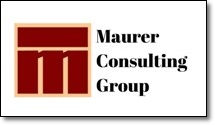 Is there ever a tipping point when you’ve saturated the market and you no longer need marketing or advertising for your company, its products and services? According to Christopher Ramey, president of The Home Trust International, the answer is no. “The more you’re seen where you’re not expected to be seen, the more you indelibly imprint your brand on your best prospects’ minds.” Think about some of the big corporate names that have made millions – even billions – selling their products: Nike, Coca-Cola, Ford. They certainly have not stopped marketing to put their names in front of consumers.
Is there ever a tipping point when you’ve saturated the market and you no longer need marketing or advertising for your company, its products and services? According to Christopher Ramey, president of The Home Trust International, the answer is no. “The more you’re seen where you’re not expected to be seen, the more you indelibly imprint your brand on your best prospects’ minds.” Think about some of the big corporate names that have made millions – even billions – selling their products: Nike, Coca-Cola, Ford. They certainly have not stopped marketing to put their names in front of consumers.
At the most basic level, prospects must know you exist before they would even consider purchasing something from you. Too many small business owners seem to think that everyone they know knows about their brand. So, if that is a true assumption, then it is easy to assume that everyone knows about your brand as well, right? This kind of thinking will likely be viewed by most people as being more than a little bit ego-centric, don’t you think?
Needless to say, that assumption is totally wrong. In today’s Internet world, your brand is drowning in Cyberspace noise amidst millions and millions of other small businesses vying for consumer attention. Just putting your marketing and advertising content out into the melee will not be nearly enough. Your messages may never be found, especially by the ideal customers you want. Sad, and more than a little bit scary, isn’t it? You have a great product or service that is perfect for a certain group of potential customers, but they don’t even know you, or the product even exists.
Ramey noted that if your habit is to only advertise during a sale, you are merely an ‘advertiser’. You are also sending a clear message that you are a discounter. You haven’t placed enough value on what you bring to customers to believe it is a bargain – or a great investment – without discounting price.
Those who continually put out information about their brand through multiple marketing channels are ‘marketers.’ They are the ones who are more likely to have their brand become indelibly imprinted in consumer minds. A successful marketing strategy can make this happen for your small business, assuming your messages are strong and sent through a variety of ‘ideal’ marketing channels. The best marketing strategy will include a broad range of marketing channels combining both traditional and non-traditional outlets.
Market Through Both Traditional and Non-Traditional Channels
Traditional marketing channels include television, radio, and print media like newspapers and magazines. With ‘The Coming’ of the Internet and online marketing, many more non-traditional marketing channels have come on the scene. Banner ads, pay-per-click advertising, social media platforms and ads, your website, e-newsletters and blog posts are just a few of the new online marketing options.
We cannot assume everyone or really anyone is aware of our brand. It’s a stretch to believe that we know every single person on the planet and that they love us. Marketing strategy requires that we know what our brand is, and that we know which consumers will be an ideal fit for our products and services. Without those two basic elements, it is impossible to know where to begin with a marketing strategy.
We cannot assume that everyone knows about us and likes us enough to buy from us. Do you remember that tenet of Know-Like-Trust that brings a client to the buying stage of a business relationship? Customers have to become aware of your company or product, then they have to find you and the rest comes afterward. What strategy will get you to that point?
Who are your competitors?
Unless you have some highly unique or extraordinary products or services, odds are there are competitors out there vying for that same group of your ideal customers. Some are doing it better than you are, some probably are doing worse at reaching your target customers. But, the fact remains that your competition is trying hard to get that ideal group of consumers to like them better than they like you.
I’m not just referring to those who claim to more or less be in the exact same business you are. Take the interior design arena for instance. First there are other interior designers doing the same kind of work that you do. Then, there are decorators, stagers, furniture stores, paint stores and window treatment workrooms/studios. But, that’s not all… Interior Designers are also competing with many of their suppliers who are trying to make design into a DIY process for your ideal customers. Marketing firms are adding design teams to help their clients turn their commercial business locations into extensions of their brands. And it goes on. It’s a very, very cluttered world for interior design professionals in practice today.
Each of your competitors wants members of your ideal customer group to think they are great – or at least better than you are. They too are sending out marketing messages through a number of marketing channels to attract that coveted group. Guess what? They may well be sending similar messages through the very same marketing channels that you are using. Are you marketing in local newspapers and magazines? They are probably there too. FaceBook? Pintrest? LinkedIN? Instagram? Odds are your competitors are right there with you, trying to attract the same customers.
3 Small Business Marketing Secrets
- You are probably not doing enough marketing. Unless you have several projects or deals in process and more on the back burner, you are not marketing enough. Being able to tell an interested prospect that you can’t start their project for ‘X’ weeks due to other active projects, is a good thing. Telling a customer that you are temporarily out of stock on a product that just sold out overnight is also a good thing.
- You are probably not spending enough on your marketing strategy to make a dent in what is required to attract your ideal customers and convert them to actual customers. Marketing costs money, but is well worth the investment needed to reach your ideal customers. Chris Ramey hit the nail on the head when he stated: “The only thing more expensive than marketing is not marketing.”
- You need to find unexpected places to publish your unique branded marketing content. If you are using the exact same marketing channels that your competition is using, only the strong will survive and succeed. Find new online channel where you can share your valued content without having to compete with those pesky competitors. Make it easier for prospect to find you, get to know you, begin to like and trust you. Stop trying to scream above the noise and become THE message your ideal customers are looking for.
Clearly, to find your ideal customers, marketing is a must. It takes time to cultivate a strong pool of consumers willing to buy from you. First, they need to find you. Then, it is your job to make them get to Know about you and your brand. With good efforts in advertising and marketing, they will grow to like you, your company and the products and services you have to offer. With ‘Like’ will come opportunities for you to build Trust. With Know-Like-Trust in place, you have the makings of a card-carrying, paying customer. If your strategy is to spend nothing at all on marketing efforts, at best, you can expect mediocre results. Time to get serious about your brand marketing strategy
____________________________________
Above post based on Most people Don’t Like You and Other Good News written by Christopher Ramey, president of The Home Trust International , for ‘Floor Covering Weekly’.






